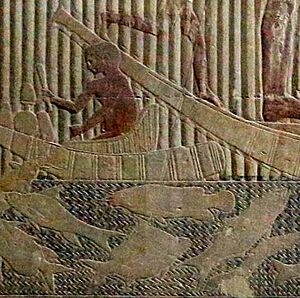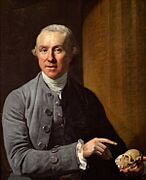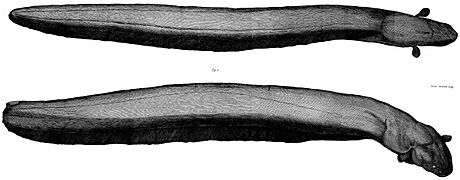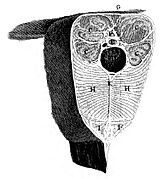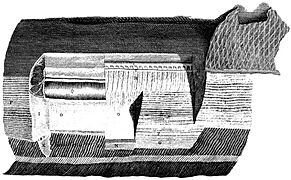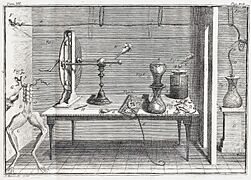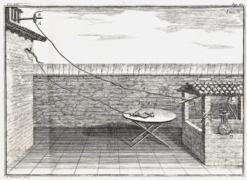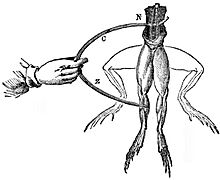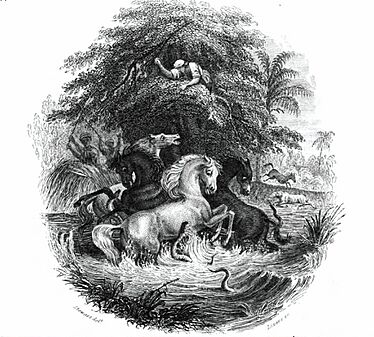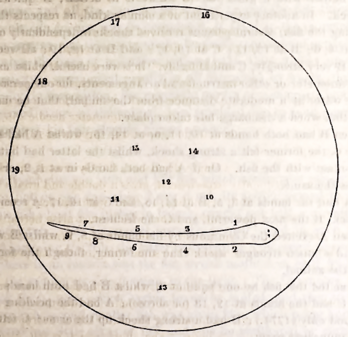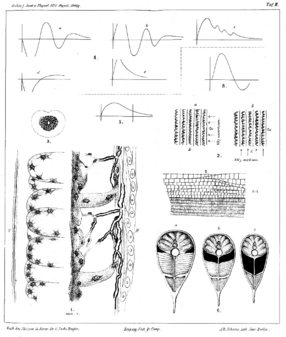History of bioelectricity facts for kids
Bioelectricity is about how living things create and use electricity. This amazing story goes way back to ancient Egypt. People there used electric fish, like the electric catfish, for medicine. Later, in the 1700s, scientists like Hugh Williamson and John Walsh started studying electric fish such as the torpedo ray and the electric eel.
Contents
Electric Fish: Nature's Powerhouses
Electric Fish in Ancient Egypt
The electric catfish lived in the Nile River and was well known to the ancient Egyptians. The Egyptians reportedly used the electric shock from these fish to help with pain, like from arthritis. They only used smaller fish for this. A large electric catfish can produce a shock of 300 to 400 volts! The Egyptians drew these fish in their mural paintings. The first known drawing of an electric catfish is from around 3100 BC. It was found on a stone palette belonging to an early Egyptian ruler named Narmer.
Electric Fish in Ancient Greece and Rome
Famous writers like Aristotle, Theophrastus, and Pliny the Elder knew about electric fish. However, they sometimes mixed up the marine torpedo ray with the freshwater electric catfish.
Studying Electric Fish in the 1700s
In the 1760s, scientists began to study the numbing shocks from electric eels. Bertrand Bajon, a French military surgeon, and Ramón M. Termeyer, a Jesuit, did early experiments.
In 1775, John Walsh studied the electric ray, also called the "torpedo." The surgeon John Hunter dissected both the electric ray and the electric eel. Hunter told the Royal Society that the electric eel looked like an eel but was very different.
Hunter found that the electric eel had two pairs of electric organs. These organs made up more than a third of the animal's body! He described these organs as having flat partitions with cross divisions. He measured these parts as being very thin.
-
John Hunter dissected an electric eel in 1775.
Also in 1775, the American doctor Hugh Williamson presented his own experiments on the electric eel. He had studied with John Hunter. Williamson showed that the eel's shocks were electrical. He described how the eel would shock fish, making them motionless. He also felt the shock himself when touching the eel.
Galvanism: The Start of Bioelectricity
The work of Williamson, Walsh, and Hunter influenced Luigi Galvani and Alessandro Volta. These two scientists are known as the founders of electrophysiology (how electricity works in living things) and electrochemistry (how electricity and chemistry are related).
-
Luigi Galvani's laboratory, where he studied how electricity affected muscles.
Discoveries in the 1800s
In 1800, explorer Alexander von Humboldt saw a unique way of fishing for electric eels. Local people would chase about thirty horses into the water. The horses' hooves would stir up the mud, making the electric eels attack. The eels, up to 1.5 meters (5 feet) long, would rise out of the water and shock the horses. Humboldt saw two horses get stunned and drown. After giving many shocks, the eels were tired and easy to catch with small harpoons.
In 1839, the chemist Michael Faraday studied an electric eel from Suriname. For four months, he measured the eel's electrical impulses. He used copper paddles and saddles pressed against the fish. Faraday proved that the eel's impulses were electrical. He saw sparks and movements on a galvanometer, a device that measures electric current. He noted that the eel could increase its shock by coiling around its prey. Faraday compared the electricity from the eel to a large Leyden jar battery.
The German zoologist Carl Sachs traveled to Latin America to study the electric eel. He brought a galvanometer and electrodes to measure the fish's electric discharges. He also used rubber gloves to catch the fish without getting shocked. This surprised the local people! In 1877, Sachs published his research. He even discovered a new electric organ in the eel, now called Sachs' organ.
-
This artwork shows Alexander von Humboldt's experience hunting electric eels with horses in 1800.
-
Michael Faraday's diagram from 1838 shows his experiment setup for studying the electric eel.
Electroreception: Sensing Electricity
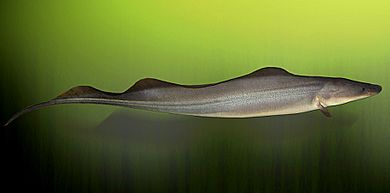
In 1678, the Italian doctor Stefano Lorenzini was dissecting sharks. He found special organs on their heads, which are now called ampullae of Lorenzini. He published his findings. Much later, in 1960, R. W. Murray proved that these organs help sharks sense electricity.
In 1921, German anatomist Viktor Franz described "knollenorgans" (tuberous organs) in the skin of elephantfishes. He didn't know their function at the time.
In 1949, the Ukrainian-British zoologist Hans Lissmann noticed something amazing. The African knife fish (Gymnarchus niloticus) could swim backward just as well as forward. It could avoid obstacles perfectly. In 1950, Lissmann showed that this fish creates a changing electric field around itself. The fish reacts to any changes in this electric field, helping it navigate and find things.


